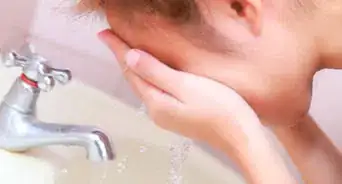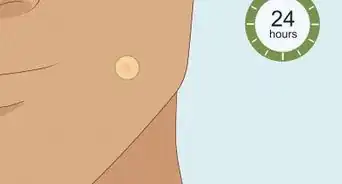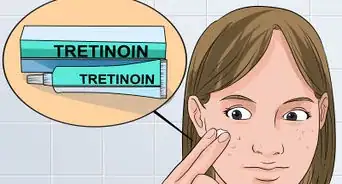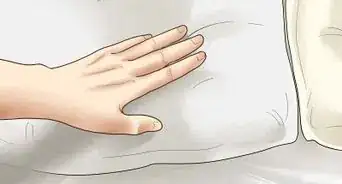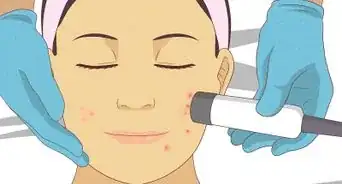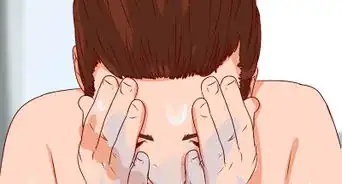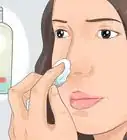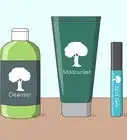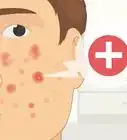This article was co-authored by Mohiba Tareen, MD. Mohiba Tareen is a board certified Dermatologist and the founder of Tareen Dermatology located in Roseville, Maplewood and Faribault, Minnesota. Dr. Tareen completed medical school at the University of Michigan in Ann Arbor, where she was inducted into the prestigious Alpha Omega Alpha honor society. While a dermatology resident at Columbia University in New York City, she won the Conrad Stritzler award of the New York Dermatologic Society and was published in The New England Journal of Medicine. Dr. Tareen then completed a procedural fellowship which focused on dermatologic surgery, laser, and cosmetic dermatology.
There are 16 references cited in this article, which can be found at the bottom of the page.
wikiHow marks an article as reader-approved once it receives enough positive feedback. In this case, 100% of readers who voted found the article helpful, earning it our reader-approved status.
This article has been viewed 176,301 times.
Aloe vera is commonly used as a skin healing agent. It has soothing properties and acts to support and improve your skin's rate of healing. Aloe vera also acts as an anti-inflammatory and antibacterial agent that has no significant side effects.[1] [2] Because of all of these wonderful properties, aloe vera can be useful for treating acne.
Steps
Treating Acne With Aloe Vera
-
1Get aloe vera. You can either buy an aloe vera plant or you can buy pre-made aloe vera gel. An aloe vera plant should be available at your local plant store and pre-made aloe vera gel is available at most pharmacies and grocery stores.
- To extract the gel from the leaf you will need to cut a good sized leaf from the aloe vera plant. It should be about 5 – 6 inches long. Wash the leaf well in water and, using a knife, cut it in half lengthwise. Use a spoon or a knife to scoop out as much gel as possible.
-
2Test a small amount of the aloe vera on your skin. You should always try a small amount of gel from the plant or a commercial product on a small area before applying all over. You need to make sure you don't have an allergy or sensitivity to the plant. It is in the same botanical family as lilies, onions and garlic, so if you react to those plants, you will likely react to aloe.[3]
- Either way, try the gel on your wrist, allow it to dry, and then rinse it off. If there is no reddening, itchiness or swelling, you can try it on your face.
Advertisement -
3Use aloe vera for spot treatment. Take 2 teaspoons of aloe vera gel and add two to three drops of lemon juice. The lemon juice helps maintain the pH of the skin. Mix well.
- Use a Q-tip to apply the mixture directly on the acne. Let this stay on your face for at least 20 – 30 minutes or overnight.
- Rinse off with lukewarm water and cleanse as usual.
- Repeat daily.
-
4Use aloe vera to create a facial mask. Cut one to two leaves about 6 inches from an aloe plant and trim off the spikes along the sides of the leaf. Cut the leaves open and scoop out the gel.
- Add 1 teaspoon of honey (honey has additional antibacterial properties) or five to seven drops of lemon juice to the aloe vera gel.[4] Mix any additives into the gel thoroughly.
- Apply the gel all over your face or use a Q-tip to apply the mixture directly on the acne.
- If you can, leave the gel on overnight, but for at least 20 – 30 minutes.
- Rinse off with lukewarm water and cleanse as usual.
- Repeat daily.
-
5Continue treatments for several weeks. It may take some time for the healing effects of the aloe vera to help your condition. If these treatments don't improve your acne in three to four weeks, make an appointment with a dermatologist to determine what your best course of action is.
Reducing Acne Outbreaks
-
1
-
2Use a gentle, plant-oil based product to clean yourself. Look for a cleanser labeled as “non-comedogenic” This means that the product does not promote the formation of comedones, blackheads, whiteheads, or pimples.[7]
- Examples include products from Neutrogena, Cetaphil and Olay. There are many store-brand products that are non-comedogenic. Read the label to be certain.
- There are oils that are used to clean the skin and many of these utilize very non-comedogenic oils. Using these is based on the principle that “like dissolves like.” In other words, oils can be used to dissolve and remove excess skin oils.
- Also use alcohol-free products. Alcohol dries and damages the skin.
-
3Use your fingertips to apply cleansers. You want to be very gentle when cleaning your skin. Using a washcloth or sponge can irritate the skin and cause more problems.[8]
-
4Treat broken-out skin gently. Do not pick, pop, squeeze, or touch acne. This can also cause flare-ups, cause scarring, and will cause a longer healing time.[9]
-
5Stay out of the sun and don't use tanning beds. Sun (and tanning beds) can damage your skin cells because of damaging UVB radiation. If you are using certain acne medications or certain other types of medication, you should know that some medications can make your skin even more sensitive to the sun.[10]
- If you do spend time outside, put on sunscreen to help protect your skin.[11]
- These drugs include antibiotics such as ciprofloxacin, tetracycline, sulfamethoxazole and trimethoprim; antihistamines like diphenhydramine (Benadryl); drugs used to treat cancer (5-FU, vinblastine, dacarbazine); heart drugs like amiodarone, nifedipine, quinidine and diltiazem; Non-steroidal anti-inflammatory drugs like naproxen, and the acne medications isotretinoin (Accutane) and acitretin (Soriatane).
-
6Do not scrub the skin roughly.[12] This can cause permanent scarring and the skin will take longer to heal. Exfoliation is popular, but vigorous exfoliation often does more harm than good.[13]
- Exfoliation can cause micro-scarring (tiny scars that can't be seen without some sort of magnification), obvious scarring and it can often make acne worse.[14]
- The “scrubs” which perform the exfoliation may also be pulling off skin that is not yet ready to fall off. It is a bit like pulling off a scab that isn't ready to fall off on its own.
-
7Avoid eating unhealthy foods. While diet doesn't directly cause acne, despite the stories you may have heard about milk and chocolate, for some people certain foods increase the risk for acne. Some foods, including dairy products and diets high in processed sugars, can increase inflammation and provide an environment in which acne can flourish.
- Specifically, high-glycemic index foods, which are carbohydrate-rich foods, are linked to acne.[15]
-
8Eat a healthy diet. This will help you ensure that you are getting the appropriate nutrients to keep your skin healthy. The vitamins that appear to be most important for the skin are vitamins A and D. In addition, consuming enough omega-3 fats can benefit those with acne.[16] [17]
- Try to make at least half of your plate is made up of vegetables, particularly at dinner.[18]
- Foods high in Vitamin A include: sweet potato, spinach, carrots, pumpkin, broccoli, romaine, kale, red peppers, summer squash, cantaloupe, mangoes, apricots, black-eyed peas, beef liver, herring, and salmon.
- Foods high in Vitamin D include: cod liver oil, salmon, tuna, milk, yogurt, and cheese. Many foods are fortified with vitamin D, but the single best way to get Vitamin D is to expose your skin to the sun 10-15 minutes a week, as sunlight triggers Vitamin D production by the skin.[19]
- Food high in omega-3 fatty acids include: flax seeds and flaxseed oil, soybean oil, canola oil, chia seeds, butternuts, walnuts, salmon, sardines, mackerel, whitefish, shad, basil, oregano, cloves, marjoram, spinach, sprouted radish seeds, Chinese broccoli and small amounts of meats and eggs.
Expert Q&A
-
QuestionCan I store any excess of the paste I make to be used later? If so, how can I store it and how long will it last?
 Luba Lee, FNP-BC, MSLuba Lee, FNP-BC is a Board-Certified Family Nurse Practitioner (FNP) and educator in Tennessee with over a decade of clinical experience. Luba has certifications in Pediatric Advanced Life Support (PALS), Emergency Medicine, Advanced Cardiac Life Support (ACLS), Team Building, and Critical Care Nursing. She received her Master of Science in Nursing (MSN) from the University of Tennessee in 2006.
Luba Lee, FNP-BC, MSLuba Lee, FNP-BC is a Board-Certified Family Nurse Practitioner (FNP) and educator in Tennessee with over a decade of clinical experience. Luba has certifications in Pediatric Advanced Life Support (PALS), Emergency Medicine, Advanced Cardiac Life Support (ACLS), Team Building, and Critical Care Nursing. She received her Master of Science in Nursing (MSN) from the University of Tennessee in 2006.
Board-Certified Family Nurse Practitioner Yes, you can store an excess of the paste in the refrigerator. Unless you freeze it, I would use the refrigerated left-over paste within three to four days.
Yes, you can store an excess of the paste in the refrigerator. Unless you freeze it, I would use the refrigerated left-over paste within three to four days.
Warnings
- The effectiveness of aloe vera as an acne treatment is up for debate. While the cooling properties of the plant are well known, its medical uses still need more research.[20]⧼thumbs_response⧽
- While topical use of aloe vera gel has few to no side effects, ingesting aloe vera gel can cause side effects, such as abdominal cramps and diarrhea.[21]⧼thumbs_response⧽
References
- ↑ https://nccih.nih.gov/health/aloevera
- ↑ http://www.ncbi.nlm.nih.gov/pubmed/23336746
- ↑ https://www.mayoclinic.org/tests-procedures/allergy-tests/about/pac-20392895
- ↑ https://www.organicfacts.net/home-remedies/honey-mask-for-acne.html
- ↑ https://www.aad.org/public/diseases/acne-and-rosacea/acne#tips
- ↑ Mohiba Tareen, MD. FAAD Board Certified Dermatologist. Expert Interview. 26 March 2020.
- ↑ http://abcnews.go.com/GMA/story?id=126810&page=1
- ↑ https://www.aad.org/dermatology-a-to-z/diseases-and-treatments/a---d/acne/tips
- ↑ https://www.aad.org/dermatology-a-to-z/diseases-and-treatments/a---d/acne-scars/tips-for-preventing
- ↑ https://www.aad.org/dermatology-a-to-z/diseases-and-treatments/a---d/acne/tips
- ↑ Mohiba Tareen, MD. FAAD Board Certified Dermatologist. Expert Interview. 26 March 2020.
- ↑ Mohiba Tareen, MD. FAAD Board Certified Dermatologist. Expert Interview. 26 March 2020.
- ↑ https://www.aad.org/dermatology-a-to-z/diseases-and-treatments/a---d/acne/tips
- ↑ http://www.dermnetnz.org/doctors/principles/functions.html
- ↑ https://www.aad.org/stories-and-news/news-releases/growing-evidence-suggests-possible-link-between-diet-and-acne
- ↑ Smith RN, Braue A, Varigos GA, et al. The effect of a low glycemic load diet on acne vulgaris and the fatty acid composition of skin surface triglycerides. J Dermatol Sci. 2008;50:41–52.
- ↑ http://www.the-gi-diet.org/lowgifoods/
- ↑ http://www.halfyourplate.ca/
- ↑ http://ods.od.nih.gov/factsheets/VitaminA-HealthProfessional/
- ↑ http://www.the-dermatologist.com/content/aloe-vera
- ↑ https://nccih.nih.gov/health/aloevera
About This Article
Since aloe vera is an anti-inflammatory and antibacterial agent, it can be a great treatment for acne. If you want to use it for spot treatment, take 2 teaspoons of aloe vera gel and add 2 to 3 drops of lemon juice to it. After mixing the solution, apply it directly to your acne with a Q-tip. Let it stay on your skin for at least 20 minutes, though you can sleep with it too. When you’re ready to remove it, rinse it off with lukewarm water. You can also turn your gel into a facial mask by mixing it with 1 teaspoon of honey or 5 to 7 drops of lemon juice. Mix your ingredients well, then apply the gel over your entire face. Leave the mask on for at least 20 minutes or sleep with it on before rinsing it off with lukewarm water. You can repeat these treatments daily for a few weeks while the healing effects of the aloe vera help your acne. To learn how to reduce acne outbreaks, keep reading!
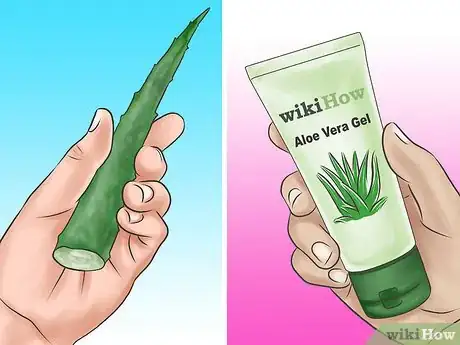
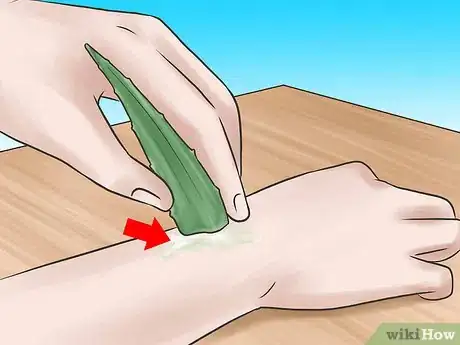
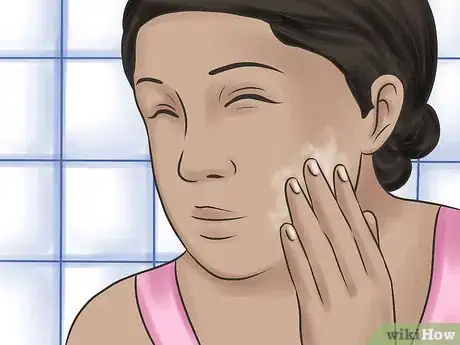
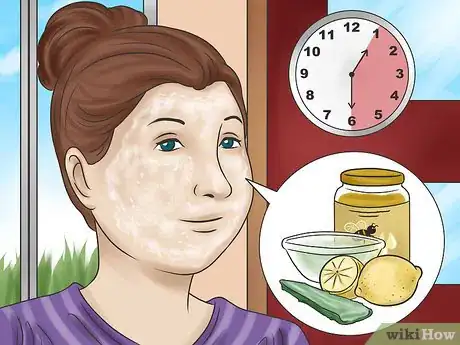
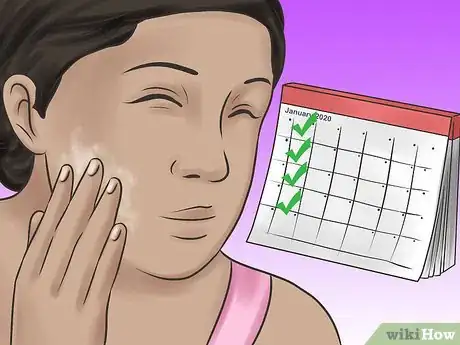
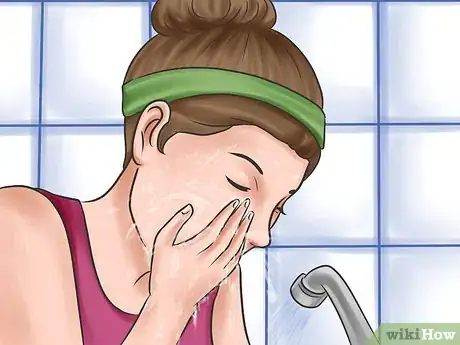

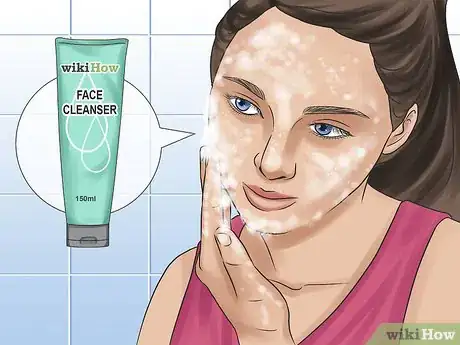
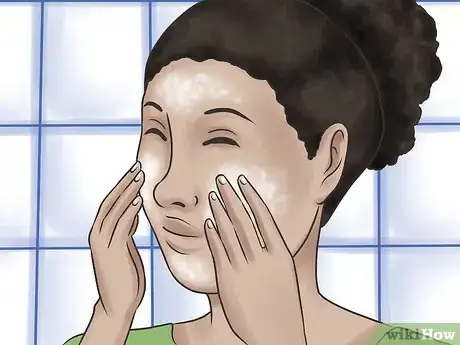
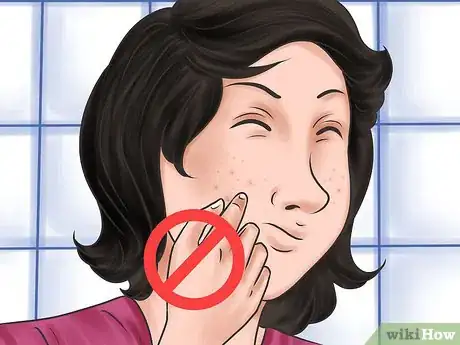
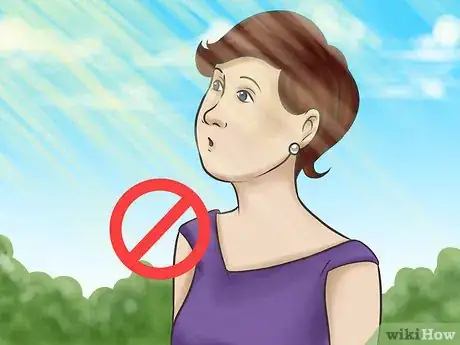
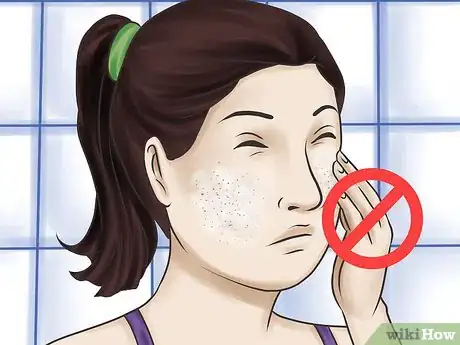
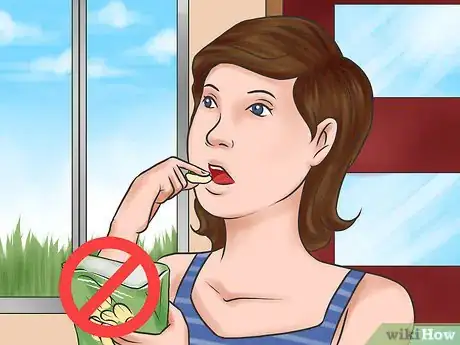
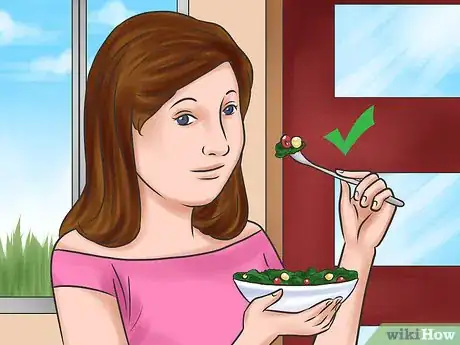

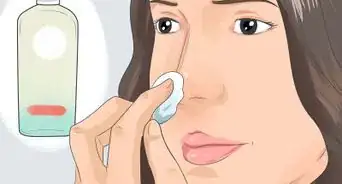
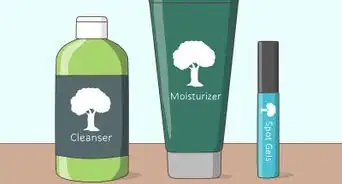
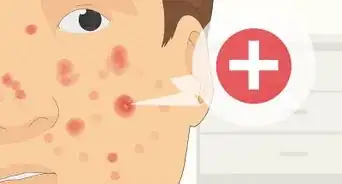
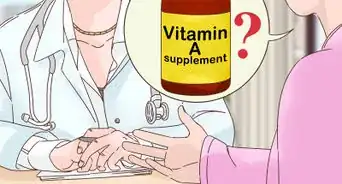
-Step-8-Version-2.webp)
